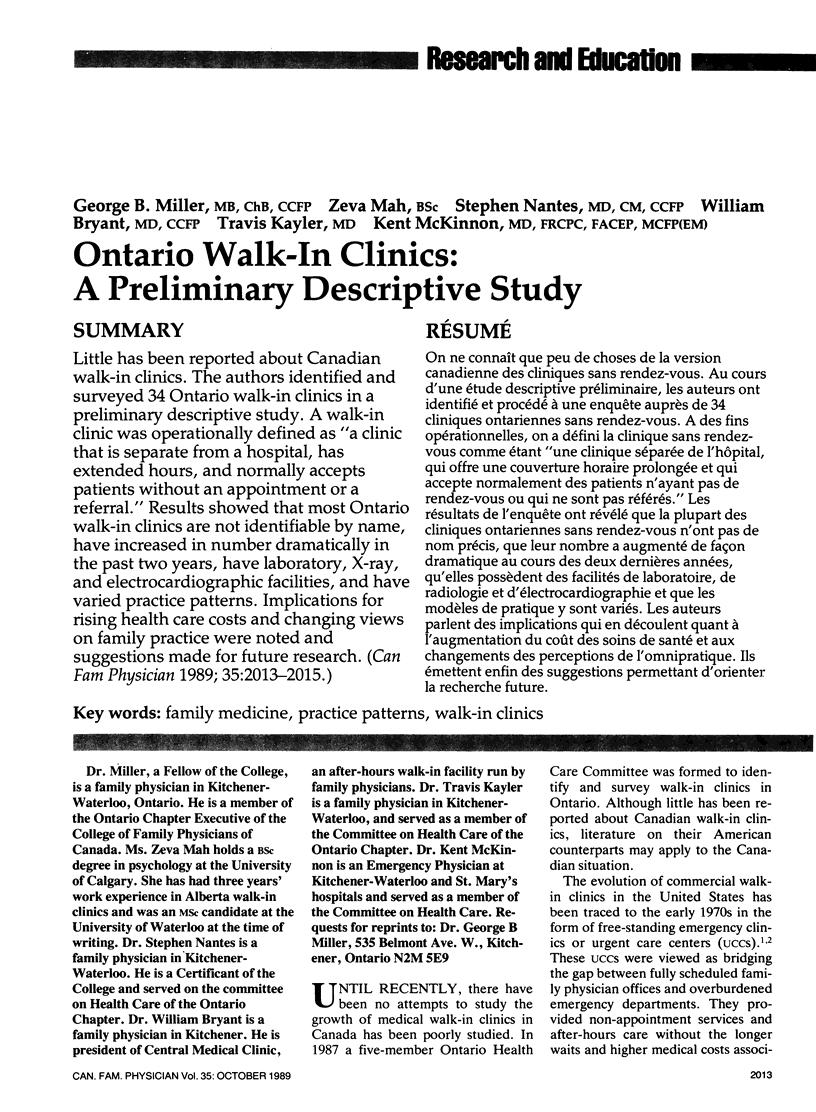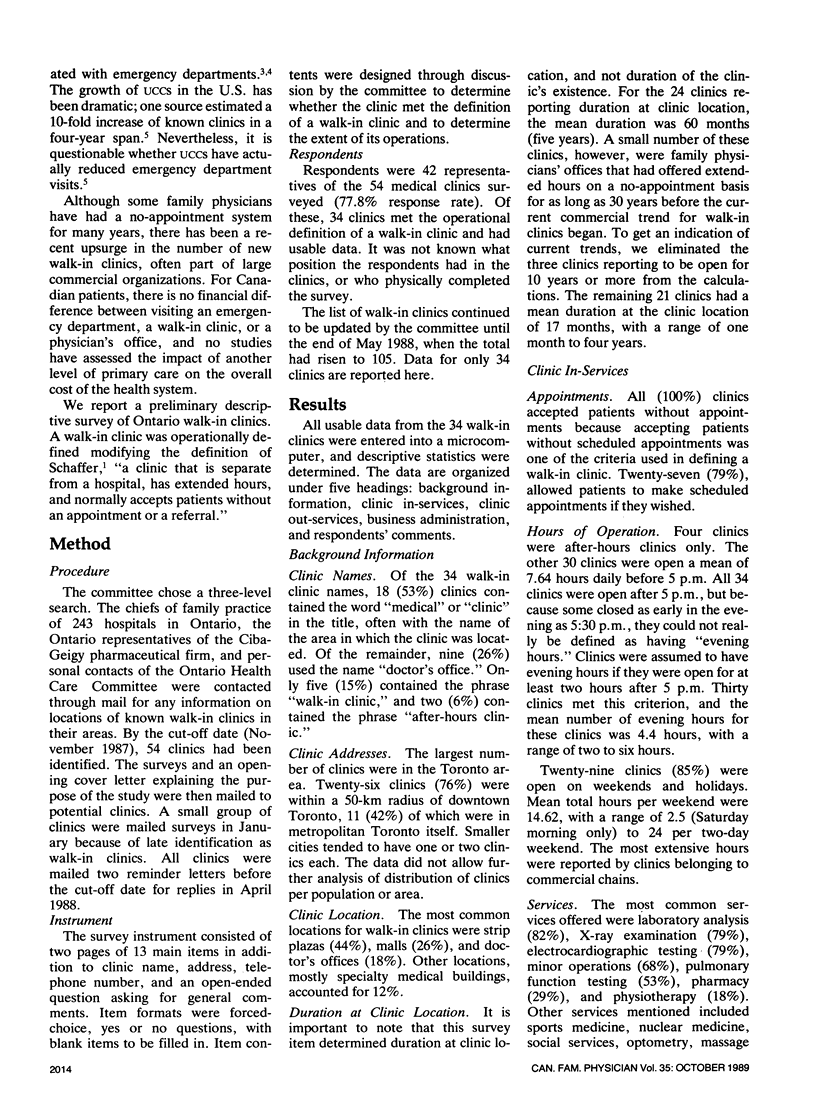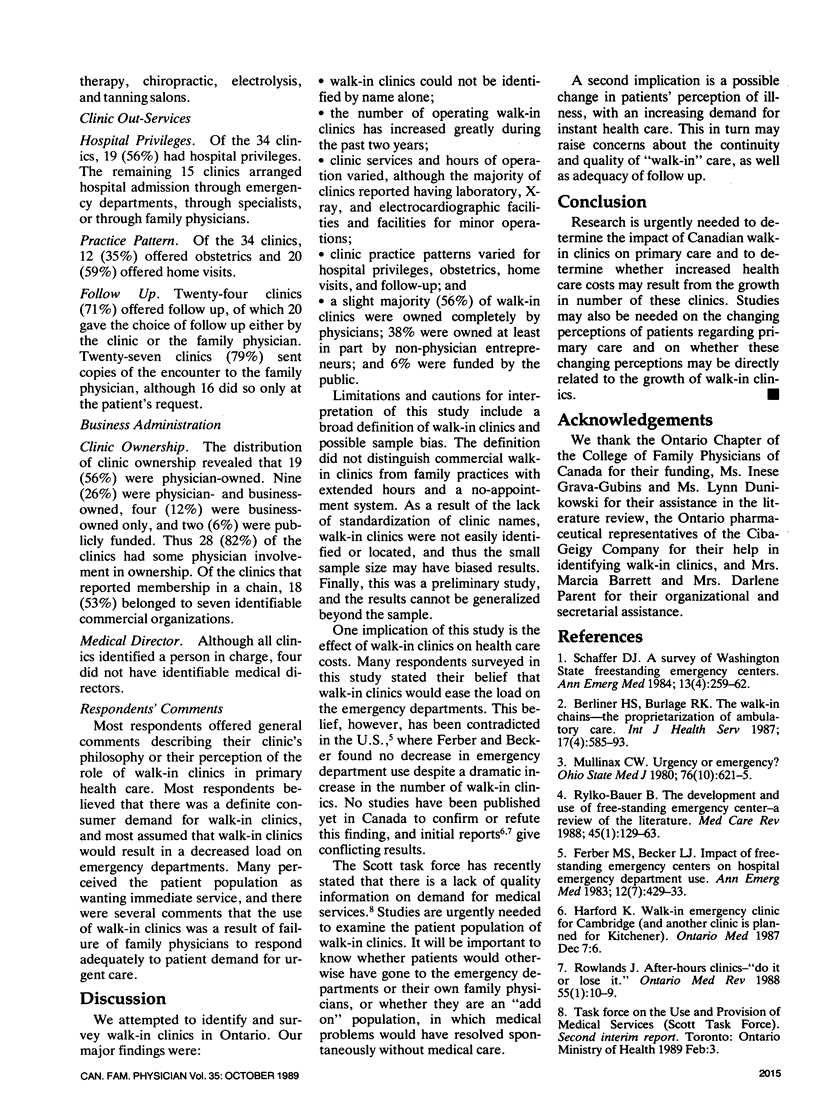Abstract
Little has been reported about Canadian walk-in clinics. The authors identified and surveyed 34 Ontario walk-in clinics in a preliminary descriptive study. A walk-in clinic was operationally defined as “a clinic that is separate from a hospital, has extended hours, and normally accepts patients without an appointment or a referral.” Results showed that most Ontario walk-in clinics are not identifiable by name, have increased in number dramatically in the past two years, have laboratory, X-ray, and electrocardiographic facilities, and have varied practice patterns. Implications for rising health care costs and changing views on family practice were noted and suggestions made for future research.
Keywords: family medicine, practice patterns, walk-in clinics
Full text
PDF


Selected References
These references are in PubMed. This may not be the complete list of references from this article.
- Berliner H. S., Burlage R. K. The walk-in chains: the proprietarization of ambulatory care. Int J Health Serv. 1987;17(4):585–594. doi: 10.2190/XVLP-JC8K-PRWL-EMRK. [DOI] [PubMed] [Google Scholar]
- Ferber M. S., Becker L. J. Impact of freestanding emergency centers on hospital emergency department use. Ann Emerg Med. 1983 Jul;12(7):429–433. doi: 10.1016/s0196-0644(83)80340-0. [DOI] [PubMed] [Google Scholar]
- Mullinax C. W. Urgency or emergency? Ohio State Med J. 1980 Oct;76(10):621–625. [PubMed] [Google Scholar]
- Rylko-Bauer B. The development and use of freestanding emergency centers: a review of the literature. Med Care Rev. 1988 Spring;45(1):129–163. doi: 10.1177/107755878804500106. [DOI] [PubMed] [Google Scholar]
- Schaffer D. J. A survey of Washington state freestanding emergency centers. Ann Emerg Med. 1984 Apr;13(4):259–262. doi: 10.1016/s0196-0644(84)80474-6. [DOI] [PubMed] [Google Scholar]


